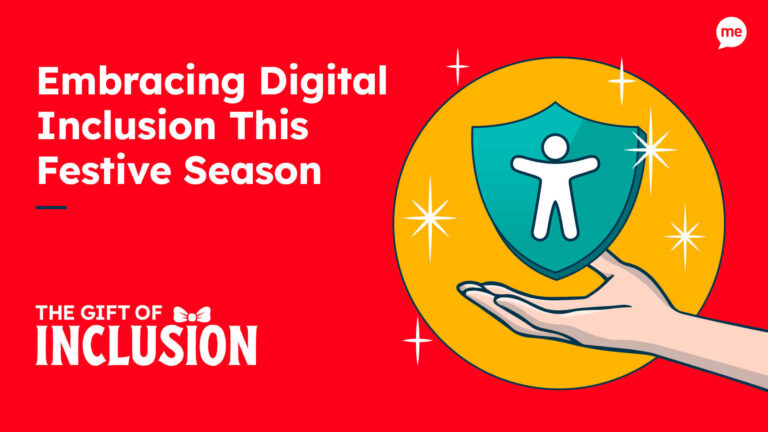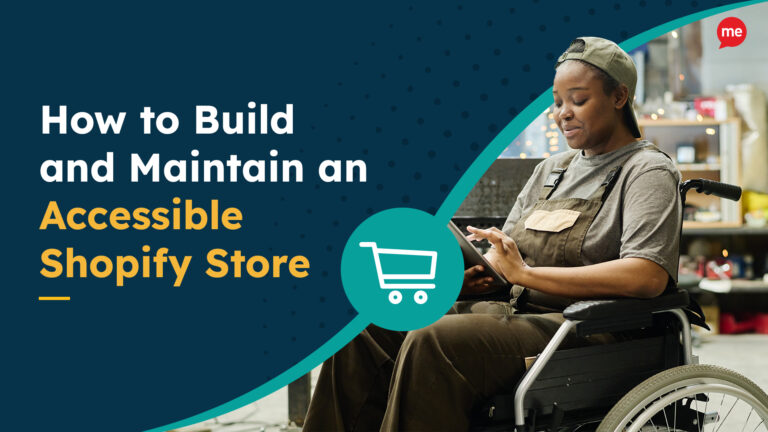It’s no shock that the e-commerce landscape has changed considerably over the last couple of years. Buyer behaviors have evolved, and revenue in the North American eCommerce market is projected to reach $1,099 billion in 2022, and by 2025 online merchants are expected to account for at least 22% of all retail sales.
You’d assume that would be good news for online retailers. However, no business is guaranteed a share of the market or profits without implementing strategies to provide inclusive customer journeys.
Here’s everything you need to know about the rise of online shopping, current and future trends, and how to succeed in the online retail industry by adopting accessible website best practices.
The E-Commerce Explosion
To gain a thorough understanding of the scale of e-commerce growth, let’s look at some statistics.
In 2021, consumers spent $870.78 billion of dollars online, about a 14.2% increase compared to 2020.
Amazon accounted for more than 40% of all U.S. e-commerce in the U.S.
According to Digital Commerce, in 2020, retailers sold more as shoppers redirected dollars normally used for travel and entertainment to the purchase of physical goods.
Electronics, the largest category of consumer digital spending, drove $165 billion of digital spending in 2021 and will likely hit $174 billion at the end of 2022.
Drivers of Change
If you were to ask anyone why the online retail industry has boomed in the 2020s so far, the stock response would likely be COVID-19. And yes, the lockdowns that restricted access to brick-and-mortar stores certainly played a part. Without access to in-person shopping, consumers had no other option but to go online.
But that’s not the full story. The pandemic merely acted as a catalyst for an already prevalent shift towards shopping online.
So, what other factors have driven the rise in online shopping? Here are some of the front runners:
24/7 Shopping—Online shopping fits into people’s busy lives better because they’re not restricted by 9-to-5 hours.
Easy Price Comparisons—Getting the best deal is easier online as consumers can flick between competitor websites quickly.
Special Deals—Many retailers offer ‘online only’ sales to attract new customers and clear stock.
More Choice —Warehouses can store a much more extensive range of stock than retailers can showcase in a high street storefront.
Free Shipping—Many online retailers offer free shipping above a certain amount, saving consumers transport and parking fees, etc.
Global Products —Online shoppers can access products from all over the world and have them delivered to their door.
How Have Businesses Adapted?
While retailers who already focused on digital-first and omnichannel models pivoted more easily to changing market demands, those who prioritized physical stores scrambled to respond. Unsurprisingly, store builders like BigCommerce, Magento, OpenCart, and Shopify experienced massive surges:
Big Commerce’s revenue grew to $219.9 million in 2021, up 44% year-on-year.
Magento sales for 2020 totaled $183 billion, up 42% from 2019.
Over 40,000 new OpenCart online stores opened in 2021
Total revenue for Shopify in the fourth quarter of 2021 was $977.7 million, a 94% increase from the comparable quarter in 2019.
However, if you think that simply moving sales online solves the problem, you’d be wrong. That’s because approximately 1 in 4 people – around 61 million US residents – have a disability which makes accessing online retail websites either difficult or impossible.
The Accessibility Problem
Whether people can access the information they need and make purchases online depends on whether they can see, understand, and navigate your website. There are several reasons that consumers may struggle, including:
Visual impairments such as poor eyesight, deafblindness, and color blindness.
Learning difficulties like dyslexia, hyperlexia, and dyspraxia.
Neurodevelopment and neurological conditions like ADHD, autism, and epilepsy.
Mobility and physical impairments.
Speaking/reading English as a second language.
Any one of these factors can make information on a website hard to read, focus on, understand, and navigate. What’s more, these consumers make up 20% of the US population.
Why is an Accessible E-commerce Website Important?
The rise in e-commerce changes the priority of website accessibility on retail sites from something that should be done to something that has to be done.
71% of consumers click away from websites they find difficult to use.
73% of disabled consumers experience accessibility barriers on more than one in four websites.
81% of disabled shoppers feel website accessibility is more important than price.
75% of disabled people and their families have walked away from a business because of poor accessibility or customer service.
82% of users with access needs would spend more if there were fewer barriers.
85% limit their shopping to websites that they know are accessible.
Only 8% of users with access needs will contact the site owner about accessibility barriers they encounter.
The value of ‘click away’ spend on barrier-free competitor sites in the UK is £17.1 billion.
Sources: The ClickAway Pound, We Are Purple
8 Accessible E-Commerce Web Design Tips
Follow these steps to make your website easier for everyone to read, focus on, and understand:
Use a content management system that supports accessibility.
Use headings correctly to structure your content.
Include alt text for all images.
Give descriptive names to your links.
Be mindful of color use and color contrasts.
Ensure forms are designed for accessibility.
Ensure responsiveness on all device types (mobile, tablet, and desktop).
Be keyboard friendly.
Future Online Retail Trends
The big question for high street retailers is whether the changes we’re witnessing now will remain in the long term.
The short answer is YES. The bottom line is that consumers save time, effort, and money by shopping online. So even those who only started online shopping during the pandemic are unlikely to go back. After all, they’ve found a cheaper, faster, and more convenient way of doing things. So, why would they?
Aside from the practicalities of online shopping, the mindset and expectations of the market are changing in several ways that make optimizing for accessibility a necessity:
A focus on inclusion – Acceptance, self-care, and inclusion are modern-day consumer priorities. According to Forbes Magazine, 52% of consumers consider a company’s values when making a purchase. So to maximize sales and build stronger customer relationships, companies must be inclusive.
The power of Gen Z – With an estimated 30% of total online spending power by 2030, Gen Z’s are particularly socially conscious in their purchasing habits and actively favor brands that care about helping and including others. If your company isn’t viewed as fair or inclusive, many Gen Z’s simply won’t spend their hard-earned dollars on your products.
Digital seniors – The aging population has become more digitally savvy during the COVID-19 pandemic. 71% of elderly internet users go online daily, so a focus on accessibility technologies to capture this market is crucial.
How Can Recite Me Support Your E-Commerce Store?
What makes a website truly inclusive is giving people as many choices as possible to customize and consume the information in a way that is tailored to their individual needs. That’s where Recite Me assistive technology comes in.
Our assistive toolbar supports a diverse range of internet users by providing tools to create a fully customizable experience. Our accessibility features can be used individually or combined to make multiple adjustments for ultimate ease of use. Once users have set their preferences, those settings persist across all websites they visit using our toolbar.
Users can:
- Personalize font size, type, and color options to make each web page easier to read.
- Utilize the mask screen tool, which isolates parts of the page to help with focus.
- Use the ruler tool to make reading easier.
- Download content as an audio file as an alternative to reading.
- Convert page content into over 100 different on-screen languages.
- Have the page read aloud in a choice of 35 different languages.
- Customize PDF documents and have them read aloud or translated.
Recite Me is simple to implement and, in many cases, can be installed in under an hour by adding just a few lines of JavaScript to your web pages.
Contact our team to find out more, or book a toolbar demo to see our software in action. Be sure to find our website accessibility checker here.


